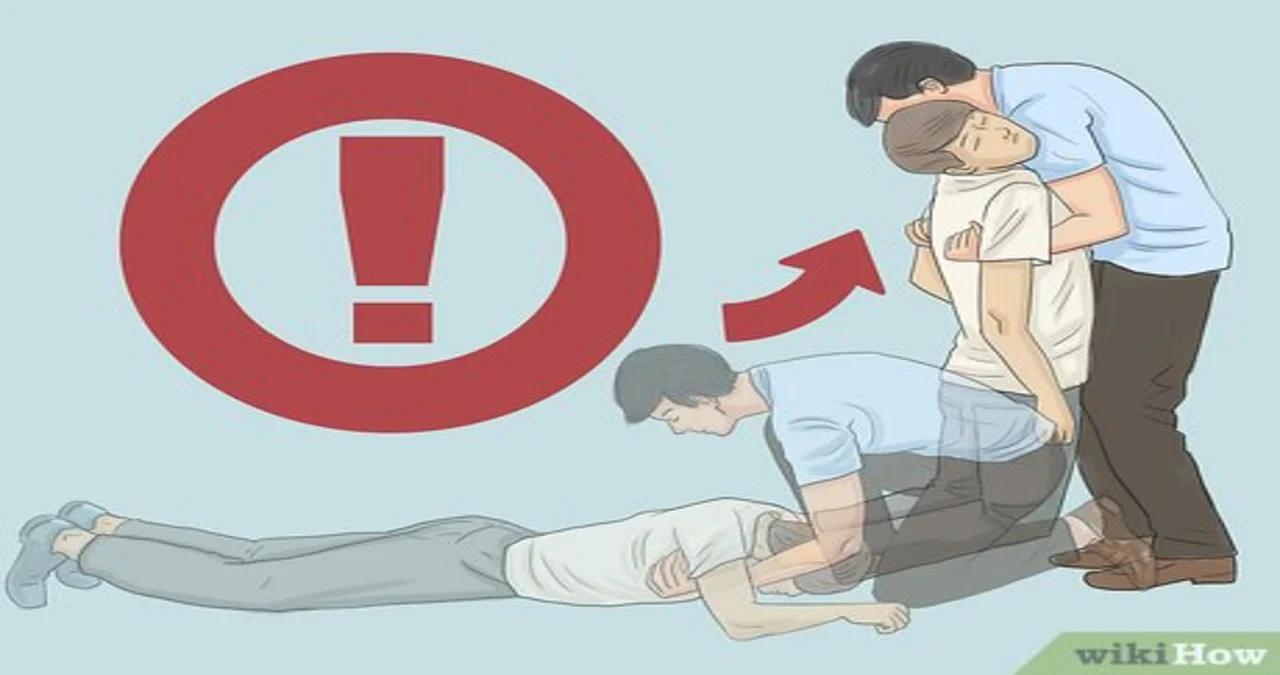
Title: Mastering the OTS Carry: A Complete Guide to This Essential Tactical Technique
Understanding the OTS Carry
The term “OTS carry” might sound like military jargon, but it’s a widely respected and useful maneuver that has applications in emergency response, fitness, military training, and survival scenarios. OTS stands for “Over The Shoulder,” and it describes the method of lifting and carrying another person by hoisting them over one shoulder. Whether you’re a first responder, a tactical enthusiast, or simply someone interested in self-reliance, learning the OTS carry is a game-changer.
This technique isn’t just about brute strength; it’s a calculated move designed for optimal balance, minimal effort, and maximum efficiency. It’s popular in situations where speed and stability are critical. While it looks simple, the proper form and application of the OTS carry can mean the difference between a successful extraction and a hazardous one. This is why it’s been a cornerstone of military drills, firefighter rescues, and even martial arts training.
The History and Evolution of the OTS Carry
The OTS carry has a long lineage in both military and civilian use. From ancient times, warriors had to find ways to evacuate wounded comrades from battlefields. Carrying someone over the shoulder offered an efficient way to move quickly while keeping a hand free for defense or navigation. As warfare modernized, so did the tactics but the OTS carry has remained a foundational method of human transport.
In modern times, the OTS has become formally integrated into military and law enforcement training. It’s also a standard technique taught in lifeguarding, firefighter academies, and outdoor survival schools. While the basic mechanics haven’t changed much, the gear and context in which it’s used have evolved. For instance, the OTS carry may be applied while wearing body armor or carrying a backpack, which requires adaptability and strength.
Why the OTS Carry Is So Widely Used
There are several reasons why the OTS carry is favored in tactical and emergency settings. First and foremost, it allows a single person to move another over moderate distances without the need for a stretcher or team assistance. In environments where time is critical such as during a fire, battlefield, or remote hiking trail this can be lifesaving.
Another reason thisremains popular is its efficiency. The carry uses the body’s core muscles and legs more than the arms, which means less fatigue over time. Additionally, once the load is properly positioned over the shoulder, balance is relatively easy to maintain, even on uneven terrain. This makes the OTS carry a practical choice for navigating stairs, rubble, or wooded areas.
Situations Where the OTS Carry Shines
The versatility of this makes it ideal for a range of real-life situations. In military combat zones, soldiers use this method to extract injured comrades quickly. Firefighters rely on it to rescue unconscious individuals from burning buildings. Outdoor adventurers and survivalists may find themselves needing the OTS carry when a friend suffers an injury miles away from civilization.
Even in urban settings, this can prove useful. During natural disasters, such as earthquakes or floods, people may need to move loved ones without the help of emergency services. The ability to perform an OTS carry in these situations offers not just a practical advantage but a psychological one, giving the carrier a sense of control in chaos.
Proper Technique for Executing the OTS Carry
Getting the OTS to carry right starts with body positioning. You want to approach the person to be carried from the side or front, depending on whether they are conscious or unconscious. Once you have a good grip, squat down, pull the individual across your shoulder, and stand using the power of your legs, not your back. The key is to avoid injury to yourself while lifting.
Once the person is over your shoulder, use one arm to hold onto their wrist or arm for stabilization. The other arm should remain free for balance, opening doors, or warding off obstacles. Keep your back straight and your core engaged as you move. Practicing the technique regularly ensures that it becomes second nature in emergencies.
Safety Considerations When Performing an OTS Carry
Despite its usefulness, the OTS carry is not without risks. Poor execution can lead to injury for both the carrier and the person being carried. Common mistakes include bending at the waist instead of the knees, failing to stabilize the carried person’s limbs, and not checking the terrain before moving.
If the person being carried has suspected spinal injuries, avoid the OTS carry entirely. In such cases, immobilization is the priority. Similarly, if the carrier is suffering from fatigue, dehydration, or injury, attempting an OTS carry could exacerbate the situation. Always assess both your capability and the environment before committing to the maneuver.
Training Tips for Mastering the OTS Carry
Training for this isn’t just about lifting heavy weights. It involves a mix of functional strength training, endurance conditioning, and balance exercises. Incorporate squats, deadlifts, lunges, and core workouts into your fitness routine. These will build the strength necessary to perform an OTS carry safely and effectively.
It’s also important to practice with real-life scenarios. Use sandbags or training dummies to simulate the feel and weight of a person. Practice in different settings indoors, outdoors, on stairs, and across various terrains. The more realistic your training, the better prepared you’ll be when it counts.
How the OTS Carry Compares to Other Carry Methods
There are several other carry techniques, such as the fireman’s carry, cradle carry, and piggyback carry. Each has its pros and cons, and the choice depends on the situation. The fireman’s carry, for example, distributes weight differently and allows the person being carried to breathe more easily. However, it may not be as stable on rough terrain.
The cradle carry is gentler but requires more arm strength and usually both hands, making it impractical for long distances or during active threats. The OTS carry stands out for its combination of speed, stability, and freedom of movement, especially when you’re working alone or under pressure.
Applications Beyond Emergency Scenarios
While most people associate the OTS carry with emergencies, it’s also seen in other domains. In fitness competitions like Strongman events or CrossFit challenges, variations of the OTS carry are used to test strength and endurance. Athletes must carry heavy objects over their shoulders and move across distances, mimicking the real-world application of the technique.
In martial arts and self-defense classes, the OTS carry is sometimes taught as a way to remove a disabled opponent or escort someone to safety. Even actors in action films train in the technique to make rescue scenes appear more authentic. These varied uses show how foundational the OTS is across disciplines.
Teaching the OTS Carry to Beginners
Introducing someone to the OTS carry should start with body mechanics. Ensure they understand how to squat properly, engage their core, and lift with their legs. Start with light weights or dummies to reduce the risk of strain or injury. Give clear instructions and demonstrate the maneuver from multiple angles.
Break down the movement into steps: approach, squat, lift, stabilize, walk. Have beginners practice each phase separately before combining them. Encourage repetition with feedback so that muscle memory builds naturally. With patience and practice, even a novice can become proficient in the OTS carry.
Psychological Benefits of Learning the OTS Carry
Knowing you can safely move someone out of danger brings peace of mind. For many people, the OTS carry isn’t just about physical capability it’s about feeling empowered in emergencies. This sense of readiness can reduce anxiety in high-stress environments and improve decision-making under pressure.
For teams like rescue crews, military units, or adventure groups training in the OTS carry builds trust. Knowing that your teammates are capable of carrying you out of danger fosters a stronger bond. It’s not just a skill; it’s a testament to readiness, leadership, and care for others.
Gear That Supports the OTS Carry
While you can perform an OTS carry without equipment, certain gear can enhance the experience. Tactical vests with reinforced shoulders make carrying more comfortable. Some backpacks are designed to distribute weight evenly if you need to carry someone on top of them. Grip gloves can help if the carried person is slippery due to rain or sweat.
Footwear is crucial. You need shoes with excellent grip and ankle support to maintain balance. In high-risk environments, every small detail counts from your socks to your hydration pack. The more prepared you are, the more effectively you can execute an OTS carry.

Challenges and Limitations of the OTS Carry
Despite all its strengths, thisy does have limitations. It’s not ideal for extremely long distances, especially with a heavy load. The pressure on your shoulders and back increases over time, making breaks essential. Additionally, navigating tight or cluttered spaces can be tricky while carrying someone over your shoulder.
Other challenges include carrying people who are significantly larger than the carrier. In such situations, alternative methods or team assistance may be required. Finally, extreme weather like heavy rain or snow can make footing uncertain and the carry more dangerous. Recognizing these limitations helps you plan more effectively.
Common Myths About the OTS Carry
One of the most common myths is that only large, strong individuals can perform the OTS carry. In reality, technique matters more than raw strength. People of all body types can master the move with proper training and conditioning. Another myth is that it’s dangerous or outdated. While it requires care, the OTS carry remains a gold standard in many emergency protocols.
Some also believe that the carry is uncomfortable for the person being transported. While it’s not luxurious, proper positioning ensures that the carried individual experiences minimal discomfort and maintains airflow, which is essential in rescue situations.
Cultural Representations of the OTS Carry
Movies, video games, and television shows often depict the OTS carry during dramatic rescues. From action heroes saving comrades to soldiers pulling wounded allies from battle, the carry symbolizes strength, bravery, and survival. While the Hollywood version may dramatize the technique, it has helped bring awareness to its importance.
These portrayals can also inspire real-life training. Viewers see the maneuver and become curious about how it’s done, prompting them to learn a skill that could one day save a life. Pop culture has played a subtle but important role in promoting awareness of the OTS carry.
Conclusion: Why Everyone Should Learn the OTS Carry
Whether you’re into tactical fitness, emergency preparedness, or just want to be ready for life’s unexpected turns, learning the OTS carry is a smart move. It’s practical, empowering, and rooted in real-world effectiveness. It allows you to move people quickly and safely, even under pressure.
As you build your physical skills and knowledge base, the OTS carry should be in your toolkit. With enough practice and awareness, it can become second nature something you’ll be grateful to know when it matters most.







